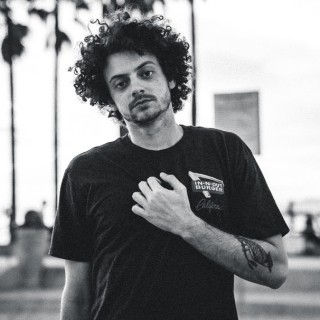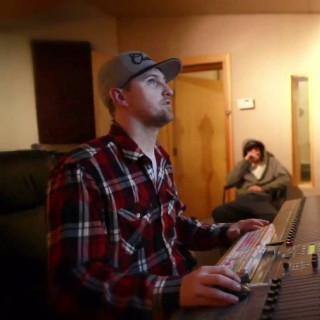
01.02.1969
119
Movie
Tekst piosenki
There is so much talk now about the art of the film that we may be in danger of forgetting that most of the movies we enjoy are not works of art. “The Scalphunters,” for example, was one of the few entertaining American movies this past year, but skillful though it was, one could hardly call it a work of art—if such terms are to have any useful meaning. Or, to take a really gross example, a movie that is as crudely made as “Wild in the Streets”—slammed together with spit and hysteria and opportunism—can nevertheless be enjoyable, though it is almost a classic example of an inartistic movie. What makes these movies—that are not works of art—enjoyable? “The Scalphunters” was more entertaining than most Westerns largely because Burt Lancaster and Ossie Davis were peculiarly funny together; part of the pleasure of the movie was trying to figure out what made them so funny. Burt Lancaster is an odd kind of comedian: what’s distinctive about him is that his comedy seems to come out of his physicality. In serious roles an undistinguished and too obviously hard-working actor, he has an apparently effortless flair for comedy and nothing is more infectious than an actor who can relax in front of the camera as if he were having a good time. (George Segal sometimes seems to have this gift of a wonderful amiability, and Brigitte Bardot was radiant with it in “Viva Maria!”) Somehow the alchemy of personality in the pairing of Lancaster and Ossie Davis—another powerfully funny actor of tremendous physical presence—worked, and the director Sydney Pollack kept tight control so that it wasn’t overdone.
And “Wild in the Streets?” It’s a blatantly crummy-looking picture, but that somehow works for it instead of against it because it’s smart in a lot of ways that better-made pictures aren’t. It looks like other recent products from American International Pictures but it’s as if one were reading a comic strip that looked just like the strip of the day before, and yet on this new one there are surprising expressions on the faces and some of the balloons are really witty. There’s not a trace of sensitivity in the drawing or in the ideas, and there’s something rather specially funny about wit without any grace at all; it can be enjoyed in a particularly crude way—as Pop wit. The basic idea is corny—It Can’t Happen Here with the freaked-out young as a new breed of fascists—but it’s treated in the paranoid style of editorials about youth (it even begins by blaming everything on the parents). And a cheap idea that is this current and widespread has an almost lunatic charm, a nightmare gaiety. There’s a relish that people have for the idea of drug-taking kids as monsters threatening them—the daily papers merging into “Village of the Damned.” Tapping and exploiting this kind of hysteria for a satirical fantasy, the writer Robert Thom has used what is available and obvious but he’s done it with just enough mockery and style to make it funny. He throws in touches of characterization and occasional lines that are not there just to further the plot, and these throwaways make odd connections so that the movie becomes almost frolicsome in its paranoia (and in its delight in its own cleverness).
If you went to “Wild in the Streets” expecting a good movie, you’d probably be appalled because the directing is unskilled and the music is banal and many of the ideas in the script are scarcely even carried out, and almost every detail is messed up (the casting director has used bit players and extras who are decades too old for their roles). It’s a paste-up job of cheap movie-making, but it has genuinely funny performers who seize their opportunities and throw their good lines like boomerangs—Diane Varsi (like an even more zonked-out Geraldine Page) doing a perfectly quietly convincing freak-out as if it were truly a put-on of the whole straight world; Hal Holbrook with his inexpressive actorish face that is opaque and uninteresting in long shot but in close-up reveals tiny little shifts of expression, slight tightenings of the features that are like the movement of thought; and Shelley Winters, of course, and Christopher Jones. It’s not so terrible—it may even be a relief—for a movie to be without the look of art; there are much worse things aesthetically than the crude good-natured crumminess, the undisguised reach for a fast buck, of movies without art. From “I Was a Teen-Age Werewolf” through the beach parties to “Wild in the Streets” and “The Savage Seven,” American International Pictures has sold a cheap commodity, which in its lack of artistry and in its blatant and sometimes funny way of delivering action serves to remind us that one of the great appeals of movies is that we don’t have to take them too seriously.
“Wild in the Streets” is a fluke—a borderline, special case of a movie that is entertaining because some talented people got a chance to do something at American International that the more respectable companies were too nervous to try. But though I don’t enjoy a movie so obvious and badly done as the big American International hit, “The Wild Angels,” it’s easy to see why kids do and why many people in other countries do. Their reasons are basically why we all started going to the movies. After a time, we may want more, but audiences who have been forced to wade through the thick middle-class padding of more expensively made movies to get to the action enjoy the nose-thumbing at “good taste” of cheap movies that stick to the raw materials. At some basic level they like the pictures to be cheaply done, they enjoy the crudeness; it’s a breather, a vacation from proper behavior and good taste and required responses. Patrons of burlesque applaud politely for the graceful erotic dancer but go wild for the lewd lummox who bangs her big hips around. That’s what they go to burlesque for. Personally, I hope for a reasonable minimum of finesse, and movies like “Planet of the Apes” or “The Scalphunters” or “The Thomas Crown Affair” seem to me minimal entertainment for a relaxed evening’s pleasure. These are, to use traditional common-sense language, “good movies” or “good bad movies”—slick, reasonably inventive, well crafted. They are not art. But they are almost the maximum of what we’re now getting from American movies, and not only these but much worse movies are talked about as “art”—and are beginning to be taken seriously in our schools.
It’s preposterously egocentric to call anything we enjoy art—as if we could not be entertained by it if it were not; it’s just as preposterous to let prestigious, expensive advertising snow us into thinking we’re getting art for our money when we haven’t even had a good time. I did have a good time at “Wild in the Streets,” which is more than I can say for “Petulia” or “2001” or a lot of other highly praised pictures. “Wild in the Streets” is not a work of art, but then I don’t think “Petulia” or “2001” is either, though “Petulia” has that kaleidoscopic hip look and “2001” that new-techniques look which combined with “swinging” or “serious” ideas often pass for motion picture art.
Tłumaczenie
Brak
Polecani artyści
Najnowsze teksty piosenek
Sprawdź teksty piosenek i albumy dodane w ciągu ostatnich 7 dni


























